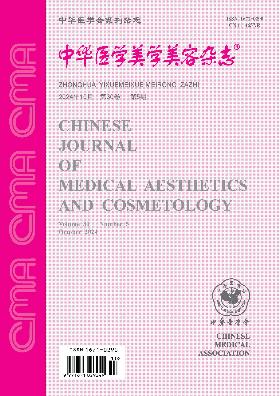Efficacy of 308 nm monochromatic excimer light and 311 nm narrow band ultraviolet on facial vitiligo
引用次数: 0
Abstract
Objective To compare the efficacy of monochromatic excimer light and narrow-band ultraviolet in the treatment of facial vitiligo patients. Methods Seventy-nine patients with facial vitiligo were randomly divided into MEL group and NB-UVB group. The MEL and 311-nm NB-UVB were applied respectively. Both groups were treated twice a week, total 30 times. Results After ten times treatment, the effective rate of MEL group and NB-UVB group was 39.02% and 15.79%, respectively. There was significant difference between the two groups (P 0.05). The efficacy of both groups showed that disease duration was a negative factor. It seemed that shorter duration of facial vitiligo would obtain better clinical effect. MEL and NB-UVB were safe and effective for the progressive vitiligo. In both groups, few adverse effets in some patients were observed. Conclusions The clinical effect of MEL in treating facial vitiligo is more rapidly than NB-UVB, but as the treatment times increase, the efficacy becomes similar. Both methods are safe in treating facial vitiligo of different stages. Key words: Vitiligo; Face; 308 nm monochromatic excimer light; Ultraviolet B, narrow-band308nm单色准分子光和311nm窄带紫外线治疗面部白癜风疗效观察
目的比较单色准分子光与窄带紫外线治疗面部白癜风的疗效。方法79例面部白癜风患者随机分为MEL组和NB-UVB组。分别采用MEL和311 nm NB-UVB。两组患者每周治疗2次,共30次。结果经10次治疗后,MEL组和NB-UVB组的有效率分别为39.02%和15.79%。两组比较差异有统计学意义(p0.05)。两组疗效均显示病程为负向因素。面部白癜风持续时间越短,临床效果越好。MEL和NB-UVB治疗进行性白癜风安全有效。两组患者均未见不良反应。结论MEL治疗面部白癜风的临床疗效快于NB-UVB,但随着治疗次数的增加,两者疗效相近。两种方法治疗不同阶段面部白癜风均安全。关键词:白癜风;脸;308 nm单色准分子光;紫外线B,窄带
本文章由计算机程序翻译,如有差异,请以英文原文为准。
求助全文
约1分钟内获得全文
求助全文
来源期刊
自引率
0.00%
发文量
4641
期刊介绍:
"Chinese Journal of Medical Aesthetics and Cosmetology" is a high-end academic journal focusing on the basic theoretical research and clinical application of medical aesthetics and cosmetology. In March 2002, it was included in the statistical source journals of Chinese scientific and technological papers of the Ministry of Science and Technology, and has been included in the full-text retrieval system of "China Journal Network", "Chinese Academic Journals (CD-ROM Edition)" and "China Academic Journals Comprehensive Evaluation Database". Publishes research and applications in cosmetic surgery, cosmetic dermatology, cosmetic dentistry, cosmetic internal medicine, physical cosmetology, drug cosmetology, traditional Chinese medicine cosmetology and beauty care. Columns include: clinical treatises, experimental research, medical aesthetics, experience summaries, case reports, technological innovations, reviews, lectures, etc.

 求助内容:
求助内容: 应助结果提醒方式:
应助结果提醒方式:


